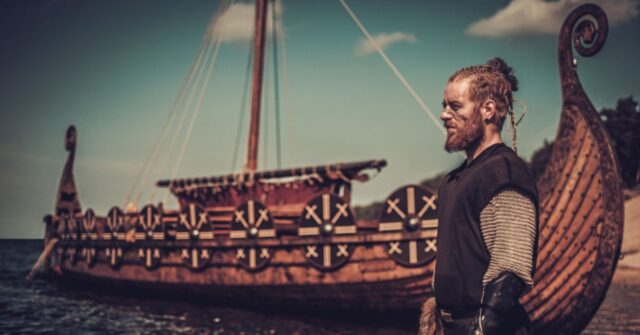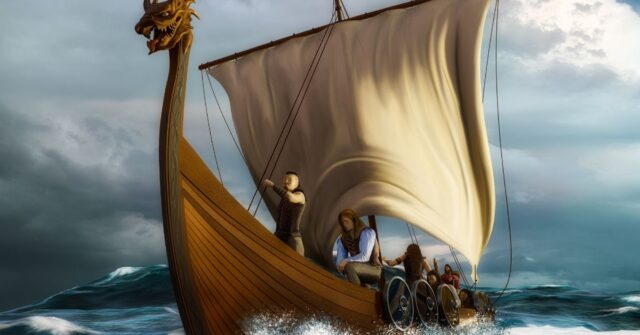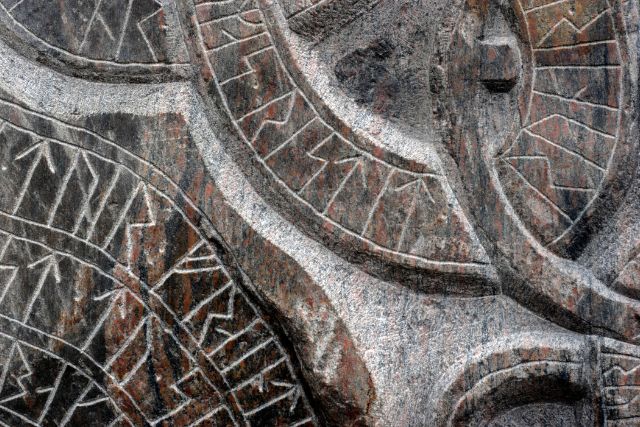The Vikings were renowned for their seafaring prowess, embarking on daring voyages across vast oceans.
One of the most intriguing aspects of their maritime success was their use of navigational tools, including the legendary sunstones.
This blog post delves into the various instruments and methods that enabled the Vikings to navigate with such remarkable accuracy.


Introduction
In the annals of history, the Vikings stand out as formidable navigators.
Their ability to traverse treacherous seas without the modern tools we take for granted today remains a subject of fascination.
Central to this navigational prowess were a combination of celestial guidance, environmental awareness, and ingenious tools such as the sunstone.
The Importance of Navigation for Viking Expeditions
Successful navigation was critical for the Vikings, who undertook extensive voyages for trade, exploration, and conquest.
Their expeditions spanned from the icy shores of Greenland to the sun-drenched coasts of the Mediterranean.
Overview of Viking Voyages
Viking voyages were driven by a thirst for exploration and the need for new trading routes.
They established settlements in places as diverse as Iceland, Greenland, and Newfoundland, showcasing their remarkable navigational skills.
Challenges Faced During Sea Travel
Viking sailors faced numerous challenges, including unpredictable weather, rough seas, and limited visibility. The ability to navigate effectively in these conditions was crucial for their survival and success.


Celestial Navigation Techniques
Before the advent of modern navigation tools, Vikings relied heavily on the sun, stars, and other natural phenomena to chart their courses. Celestial navigation was a key component of their maritime strategy.
Using the Sun and Stars
Vikings used the position of the sun during the day and the stars at night to determine their direction. They were adept at reading the night sky and could navigate using prominent constellations.
The Role of the North Star
The North Star, or Polaris, was a crucial navigational aid for the Vikings. Its fixed position in the night sky provided a reliable reference point for determining true north.
Seasonal Variations in Celestial Navigation
Celestial navigation required an understanding of the seasonal changes in the night sky. Vikings adjusted their navigation strategies based on the time of year and the varying positions of celestial bodies.
The Mystery of the Sunstone
The sunstone is one of the most intriguing and debated tools in Viking navigation.
Historical accounts and recent scientific studies have shed light on how these stones might have been used to locate the sun on cloudy days.


What Are Sunstones?
Sunstones are believed to be translucent crystals, such as calcite, that can polarize light. By rotating these stones, Viking navigators could detect the sun’s position even when it was obscured by clouds.
Historical References to Sunstones
Sagas and other historical texts mention sunstones, suggesting they were an integral part of Viking navigation. These references have spurred interest and research into their actual use.
Scientific Basis of Sunstones
Scientific studies have demonstrated that sunstones can polarize light, making it possible to pinpoint the sun’s location.
This method involves observing the light patterns that the stone produces when aligned with the sun.
How Sunstones Work
Understanding how sunstones work requires a basic knowledge of light polarization and how it can be used for navigation.
Principles of Light Polarization
Light polarization occurs when light waves vibrate in a single plane. Sunstones can filter polarized light, allowing navigators to determine the direction of the sun even when it’s not visible.
Experiments Supporting Sunstone Use
Experiments have confirmed that sunstones can indeed be used to find the sun’s position.
These tests have shown that the stones work effectively under various weather conditions, supporting their historical use by the Vikings.
Limitations and Criticisms
Despite the evidence supporting sunstone use, there are criticisms and limitations.
Some researchers argue that the technique may not be reliable under all conditions, and there is a lack of direct archaeological evidence from Viking sites.
Other Navigational Tools and Methods
In addition to sunstones, Vikings employed a variety of other navigational tools and techniques to ensure their voyages were successful.


The Norse Compass
The Norse compass, or “sun compass,” was a wooden disk used to track the sun’s shadow. This tool helped Vikings determine their latitude and maintain a steady course.
Ocean Currents and Wind Patterns
Vikings were skilled at reading ocean currents and wind patterns. They used this knowledge to their advantage, following the Gulf Stream and other currents to reach their destinations more efficiently.
Landmarks and Coastal Navigation
When close to land, Vikings relied on familiar landmarks and coastal features for navigation. This method, known as “coastal piloting,” involved recognizing specific points along the coastline to determine their position.
Archaeological and Historical Evidence
While much of what we know about Viking navigation comes from historical texts, archaeological discoveries have also provided valuable insights.
Findings from Viking Shipwrecks
Archaeologists have uncovered Viking shipwrecks that offer clues about their navigational tools.
Although no sunstones have been definitively linked to Viking sites, other artifacts have shed light on their seafaring capabilities.


Artifacts and Historical Texts
Artifacts such as the Norse compass and historical texts like the sagas provide important evidence of the navigational methods used by Vikings.
These sources help us understand how they planned and executed their voyages.
Modern Discoveries and Research
Recent discoveries and ongoing research continue to enhance our understanding of Viking navigation.
Advances in technology and new archaeological finds are providing fresh perspectives on how these ancient mariners traversed the seas.
Cultural and Symbolic Significance
For the Vikings, navigation was not just a practical skill but also carried significant cultural and symbolic meaning.
Rune Marks and Norse Mythology
Rune marks on navigational tools were imbued with symbolic meaning.
These marks were believed to offer protection and guidance, reflecting the Vikings’ deep connection to their mythology and spiritual beliefs.


Navigational Tools in Viking Culture
Navigational tools were highly valued in Viking culture.
They represented the knowledge and skill required to undertake long and perilous journeys, reinforcing the importance of navigation in Viking society.
Conclusion
The Vikings’ mastery of navigation was a testament to their ingenuity and adaptability.
Through a combination of celestial navigation, environmental awareness, and innovative tools like the sunstone, they achieved remarkable feats of exploration.
The legacy of their navigational expertise continues to influence modern maritime practices.
Summary of Viking Navigational Expertise
Viking navigators were adept at using a range of techniques and tools to guide their journeys.
From celestial navigation to the use of sunstones and ocean currents, their methods were both sophisticated and effective.
Legacy and Influence on Modern Navigation
The legacy of Viking navigation endures in modern seafaring practices.
Their innovative approaches to solving navigational challenges have left a lasting impact on the way we understand and navigate the world’s oceans today.











